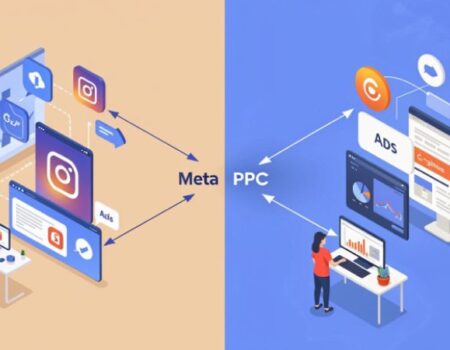Measuring PPC Performance in The Luxury Fashion Space
Running pay-per-click (PPC) ads for luxury fashion isn’t the same as regular online shopping. It’s not just about higher prices—it’s about understanding unique customers, long buying decisions, and using data smartly.
To grow successfully, luxury brands need a strategy that fits their market. Unlike mass-market retail, the luxury space requires an approach that considers brand heritage, exclusivity, and a highly discerning audience.
Understanding the Luxury Fashion Consumer
Luxury shoppers have different motivations and buying habits, which impact how PPC campaigns should be structured. They can be grouped into three main categories:
- Ultra-High-Net-Worth Individuals (UHNWI): These are wealthy buyers who purchase luxury items frequently without much concern for price. They value exclusivity, craftsmanship, and personalization.
- Aspirational Consumers: People with middle to high incomes who buy luxury items occasionally, making careful choices to match their lifestyle. They aspire to own luxury goods but may be selective about their purchases.
- New Luxury Shoppers: Younger generations (Millennials and Gen Z) who interact with luxury brands online and may prefer pre-owned items. They are heavily influenced by social media and online reviews.
Luxury purchases are influenced by factors like status, quality, brand heritage, and storytelling. PPC campaigns should consider these motivations when crafting ads and landing pages. Ecommerce PPC strategies should focus on tailoring ad messaging to appeal to these different groups.
The Complexity of Luxury Purchase Paths
Unlike regular online shopping, luxury buyers take their time to make decisions. Many research products, compare prices, and seek reviews before purchasing. A study found that two-thirds of Chinese luxury buyers conduct thorough research before buying, with over 40% relying on images and pricing comparisons.
Studies show that as the price of a product increases, so does the number of touchpoints before a purchase. A luxury customer might engage with a brand up to 23 times before buying. Since 80% of luxury sales are influenced by digital channels, brands need to track customer journeys carefully and optimize PPC strategies accordingly.
For brands that rely on new customer acquisition, PPC should be paired with strong social media content and lead nurturing campaigns. Simply measuring PPC performance on a weekly basis isn’t enough; brands need access to purchase path data to make informed decisions. Misaligned reporting windows can lead to poor optimization decisions and stalled growth.
The Influence of Trends and Tradition
Luxury buyers are influenced by both current trends and traditional brand values. A survey found that 70% of luxury consumers follow trends, while 77% value tradition.
Trends in luxury fashion can change overnight due to celebrity influence, social media, or major events. Brands need to monitor search trends and adjust their PPC ads quickly to capitalize on growing interest in specific products. A good strategy is to categorize search terms, track their changes over time, and use the data to refine marketing strategies.
One way to do this is by:
- Exporting search query data daily and tracking trends over time.
- Using scripts or AI to categorize search queries and group them based on themes.
- Creating a dashboard to visualize search trends and compare them against historical averages.
- Assigning an index to each category to measure relative changes in demand.
This approach allows brands to react quickly to trends instead of relying on week-over-week changes in PPC performance. Additionally, insights from search data can be shared with SEO, PR, and product teams to align efforts across channels.
Holistic Performance Measurement
Measuring PPC success in luxury fashion requires looking beyond simple return on ad spend (ROAS). Luxury brands need to focus on long-term customer value and personalized experiences. Instead of just measuring how much money was made from ad spend, brands should evaluate performance holistically, considering customer acquisition costs (CAC), engagement rates, and lifetime value (CLV).
Unified Data Collection
Luxury brands invest heavily in advertising, with a significant portion going to digital marketing. However, PPC performance doesn’t exist in isolation. It’s affected by other marketing efforts, both online and offline.
Collecting and unifying data from different sources—such as online stores, physical boutiques, and events—helps brands better understand their audience and set the right PPC budget and goals. This requires:
- Integrating data from multiple platforms, including Google Ads, Meta Ads, CRM systems, and offline sales.
- Building a system to track users across different touchpoints and measure the influence of PPC ads on the overall customer journey.
- Aligning PPC strategies with retail store activity, pop-ups, and exclusive events to enhance targeting efforts.
Attribution Modeling
Traditional last-click attribution, where the final interaction before a sale gets all the credit, doesn’t work well for luxury fashion. Customers interact with many touch points before making a decision.
Big luxury brands like Louis Vuitton and Gucci use advanced omnichannel data platforms to connect in-store activity with online behavior. Some brands also use Marketing Mix Modeling (MMM), an old but effective method that looks at how PPC fits into the broader marketing strategy.
Multi-touch attribution models, such as Google’s data-driven attribution (DDA), assign value to different customer interactions instead of only the last click. However, even these models have limitations. That’s why many brands combine DDA with Marketing Mix Modeling to better understand PPC’s role within the entire marketing mix.
Customer Lifetime Value (CLV)
CLV measures how much profit a customer will bring to a brand over time. Instead of only focusing on short-term ROAS, luxury brands should identify which customer segments bring the most long-term value and adjust their PPC strategy accordingly.
For example, if one group of customers spends $11,000 over time while another spends $4,000, the brand should invest more in attracting the higher-value customers. This helps in better budgeting, bidding strategies, and long-term growth.
Here’s how brands can use CLV data:
- Identify customer segments that generate the highest revenue over time.
- Adjust bidding strategies to prioritize high-value customers.
- Tailor ad messaging and promotions to attract and retain loyal buyers.
Instead of aiming for the highest short-term ROAS, brands should focus on acquiring customers who will continue purchasing for years to come.
Partner with our Digital Marketing Agency
Ask Engage Coders to create a comprehensive and inclusive digital marketing plan that takes your business to new heights.
Contact Us
Final Thoughts
PPC is just one part of a bigger marketing system. A single metric or platform can’t tell the full story. Luxury fashion brands have unique customers, long decision-making processes, and ever-changing trends to consider.
Some brands go deep into brand keyword research to set better KPIs, while others still rely on outdated models like last-click attribution. While data analysis takes effort, it ultimately helps brands scale their PPC spend effectively and drive sustainable growth.
Boost your online presence and drive real results with Engage Coders! Our expert team specializes in web development, SEO, and digital marketing to help your business grow and thrive.
Let’s create your digital success story—contact us today!








